- News
- Reviews
- Bikes
- Components
- Bar tape & grips
- Bottom brackets
- Brake & gear cables
- Brake & STI levers
- Brake pads & spares
- Brakes
- Cassettes & freewheels
- Chains
- Chainsets & chainrings
- Derailleurs - front
- Derailleurs - rear
- Forks
- Gear levers & shifters
- Groupsets
- Handlebars & extensions
- Headsets
- Hubs
- Inner tubes
- Pedals
- Quick releases & skewers
- Saddles
- Seatposts
- Stems
- Wheels
- Tyres
- Tubeless valves
- Accessories
- Accessories - misc
- Computer mounts
- Bags
- Bar ends
- Bike bags & cases
- Bottle cages
- Bottles
- Cameras
- Car racks
- Child seats
- Computers
- Glasses
- GPS units
- Helmets
- Lights - front
- Lights - rear
- Lights - sets
- Locks
- Mirrors
- Mudguards
- Racks
- Pumps & CO2 inflators
- Puncture kits
- Reflectives
- Smart watches
- Stands and racks
- Trailers
- Clothing
- Health, fitness and nutrition
- Tools and workshop
- Miscellaneous
- Buyers Guides
- Features
- Forum
- Recommends
- Podcast
£1,899.99
VERDICT:
A great value for money package that is an absolute hoot to ride pretty much anywhere
Weight:
8,580g
Contact:
At road.cc every product is thoroughly tested for as long as it takes to get a proper insight into how well it works. Our reviewers are experienced cyclists that we trust to be objective. While we strive to ensure that opinions expressed are backed up by facts, reviews are by their nature an informed opinion, not a definitive verdict. We don't intentionally try to break anything (except locks) but we do try to look for weak points in any design. The overall score is not just an average of the other scores: it reflects both a product's function and value – with value determined by how a product compares with items of similar spec, quality, and price.
What the road.cc scores meanGood scores are more common than bad, because fortunately good products are more common than bad.
- Exceptional
- Excellent
- Very Good
- Good
- Quite good
- Average
- Not so good
- Poor
- Bad
- Appalling
The Vitus Energie CRX cyclo-cross bike is an absolute blast to ride thanks to sharp, fun handling along the trails or around tight, technical muddy circuits. It's great for a day out on the gravel, and you can chuck mudguards on it too if you fancy a high-speed, year-round commuter.
- Pros: Highly versatile frameset, great handling off-road
- Cons: Cheap alloy seatpost is a bit at odds with the overall price
The Ride
If you want to ride fast off-road without the benefits of suspension then this Vitus is one of the best bikes to have a play on. The racy geometry and low-slung position mean you can really get down and drop that centre of gravity to benefit the handling when the terrain is tough, and the way it responds to the slightest shift in body weight is very impressive.
If you are riding in the woods or on rough, rutted gravel tracks, the Vitus hops and glides over tree roots and potholes with grace and as long as you keep looking ahead at what details are coming up you can keep the speed up as you flick the front end and bunny hop the rear. It's a full overload of the senses as you jump/pedal/brake your way through the onslaught of obstacles.
If racing around fields is your thing (it is a cyclo-cross bike after all!) then you won't be disappointed here either. The light weight means you can repetitively accelerate hard out of the bends lap after lap, and the climbs can become a joy.
The frame is very stiff, too, so when you are stamping on the pedals with your lungs burning and muscles screaming you are getting everything back from what you are putting in.
The head angle is 72 degrees, which gives quick handling when on loose terrain, and I really enjoyed chucking the bike down some technical sections of woodland trail. You get a lot of feedback through the fork so you know what the tyres are up to, and when you have to really haul on those 160mm rotors there is no feeling of flex or twisting under load.
For a top-end off-road racer, the Vitus is surprising versatile with plenty of tyre clearance around the outside of the standard 35mm knobbly tyres, and it'll take mudguards too.
With some slick tyres on, the Vitus will make a handy commuter. Its geometry, although quite aggressive for off-road, is pretty sedate on the tarmac making it perfect for carving through traffic or dealing with wet and greasy surfaces during the winter months.
On the road the 1x groupset can be a little gappy but that is the only real criticism I'd have with it really. Again, its weight makes it a formidable speed machine and with the wider volume tyres comfort is pretty good, too, for such a stiff frame.
Frame and fork
This is Vitus's top end cyclo-cross frame and it's gone for Toray grade high modulus carbon fibre. Basically it mean the fibres are more refined to get a more uniform size, allowing you to pack more of them in for a given space; this results in a stiffer but lighter frame than if you are using a lower quality grade.
As I mentioned above, the Vitus offers a lot of stiffness, not just from the material and layup but from the actual tube shapes.
Up front you get a tapered head tube and corresponding full carbon fork steerer. No real surprise there, but rather than going for 1 1/8in expanding to 1 1/4in, like most, the bottom bearing section is 1 1/2in for extra stiffness to deal with steering and braking loads.
The down tube is a large square/oval affair which meets the flared seat tube at the pretty expansive bottom bracket junction. Continuing the theme of 'chunky', the chainstays are also massive to deliver all of that drive from your legs.
Promoting some comfort, the top half of the frame is a little bit more slender, with the top tube having quite a contrast in size with the down tube. The seatstays are more svelte, too, to promote some flex.
Vitus has gone for 12mm thru-axles front and rear for wheel retention, which is good to see as that is the most common standard that wheel manufacturers are settling on. You get flat mounts for the disc callipers too.
To keep things clean and out of the mud, Vitus has routed all of the cables and hoses internally, which should also keep things more comfortable when shouldering the bike over obstacles and the like.
There are ports should you want to switch to a 2x crankset setup and the frame is drilled to accept a front mech.
Finishing kit
All four models in the Energie range come with SRAM 1x setups, with this CRX model using a full Force groupset for £1,899.99.
The Xsync chainset gives you a 40-tooth chainring paired to an 11-32, 11-speed SRAM cassette. For the fast racing style of cyclo-cross I found that a good spread of gears, although a little lacking top end when it comes to the road or fast, flowing gravel tracks.
The closer ratio sprockets of the 11-32 cassette do offer fewer big steps between gears than some options seen on gravel bikes, so I was happy with that. We are all different, though, and changing of cassettes and chainrings isn't a massive hassle to get what you are after.
We've reviewed the Force 1X groupset before so I won't go into huge amounts of detail about it, but it's fair to say that I found it a very nice setup to use. Even covered in mud and grit the shifting remained positive, and the clutch rear mech made sure the chain never unshipped on even the roughest of terrain.
Like I said up top, the Vitus uses 160mm rotors front and rear which is ample stopping power for a bike of this kind. You get a lot of control from the levers so you can play about with the amount of power you are putting through them to avoid locking up.
The levers aren't my favourites – I prefer the shape of Shimano's Ultegra hydraulic levers – but the SRAMs aren't uncomfortable and there is plenty of hood to grab onto when the going gets a bit rough.
The rest of the kit is Vitus' own-branded stuff which takes care of the handlebar, stem and seatpost. It's all alloy and does a decent enough job, especially the stem and bar which are perfectly stiff enough for the challenge, but for this money I'd expect to see a carbon seatpost or at least a very good aluminium one. Going carbon would also bring a little bit of flex to offset the stiffness of the frame.
I got on okay with the Vitus saddle. It's not my favourite shape but even after some quite long rides I never really suffered with any major discomfort.
Wheels and tyres
For the wheels Vitus has specced WTB STPi23 rims with Novatec disc-specific hubs. It's a pretty solid wheelset and they took some hard knocks over the course of testing; I suffered no issues with them whatsoever. Their weight isn't bad, and the freewheel engagement was definitely fast enough for racing out of corners and hard accelerations from a standing start.
The tyres are WTB CrossBoss in a 35mm width and they are tubeless ready – the carcass is still porous like a standard tyre, but with sealant they will seal themselves. Well, eventually... The rear tyre leaked like a sieve until I'd pumped it up a few times, and you could see the sealant closing up all of the gaps in the sidewall.
Performance-wise, though, I was very happy with them. Their knobbled tread could deal with most situations, even the mud, unless it was really wet and chewed up. On gravel they offered a decent bite and they flew along on the tarmac pretty well, too. They show no sign of cuts or anything, so puncture resistance looks to be good as well.
Value
When it comes to value, the Vitus doesn't disappoint either.
Yes, £1,900 is a big outlay but it costs £400 less than the Boardman CXR 9.4 for the same level of kit. I really liked that bike too, so for the Vitus to offer a better ride and come with such a saving shows what sort of package we are looking at here.
> Buyer's Guide: 12 of the best cyclo-cross bikes
Canyon's highly regarded, quirky looking Inflite CF SLX 8.0 Pro Race is also heavier, plus you only get a SRAM Rival groupset for the £2,499 outlay.
Overall, the Vitus Energie CRX is one hell of a package for the money, and it is a great bike to ride too, whether you're racing or just playing around off the beaten track.
Verdict
A great value for money package that is an absolute hoot to ride pretty much anywhere
road.cc test report
Make and model: Vitus Energie CRX
Size tested: 56cm
About the bike
List the components used to build up the bike.
Frame T700 High Modulus CX carbon frame 142 x12mm
Forks High Modulus Tapered Carbon Fork
Shock N/A
Chainset SRAM Force XSync 40t
Bottom Bracket SRAM GXP
Shifters SRAM Force CX1 HRD
Front Derailleur N/A
Rear Derailleur SRAM Force CX1
Cassette SRAM PG1170, 11-32t
Chain SRAM PCX1
Rims WTB STPi23
Front Hub Novatec, disc specific
Rear Hub Novatec, disc specific
Tyres WTB CrossBoss 35 Tan Wall
Front Brake SRAM Force 1 HRD hydraulic disc
Rear Brake SRAM Force 1 HRD hydraulic disc
Handlebars Vitus Compact, 6061 Alloy
Stem Vitus, 3D forged 6061-T6 aluminium
Headset Token A38M integrated
Saddle Vitus
Seatpost Vitus, 6061-T6 alloy
Seatclamp Vitus
Tell us what the bike is for and who it's aimed at. What do the manufacturers say about it? How does that compare to your own feelings about the bike?
Vitus says, "The Energie CRX is our high end full carbon cyclocross race bike – designed specifically to meet the demands of all-out CX assaults. This high performance full carbon frame features increased stiffness and tyre clearance making this a phenomenal bike for back country roads and forest parks alike. When you take into consideration that numerous Pro Tour teams use cyclo-cross bikes during the early season Classics races you can really appreciate the potential and diversity that this bike can offer_
The Energie CRX comes equipped with a race ready single ring set up built around the SRAM Force 1 Hydro groupset which combines a wide ratio cassette(11-32t) with a single ring X-SYNC 40t chainring; Force hydraulic disc brakes; a Tubeless-Ready WTB Frequency CX Team/Novatec wheelset and Vitus finishing kit to complete the package_
The Energie CRX frameset features a High-Modulus T700 HM-UD Carbon construction for superior strength to weight. Full internal cable routing has been specifically designed to prevent ingress of mud and water and to increase comfort when shouldering the bike during racing"
It does everything that Vitus says it should; it's a blast to ride and offers great value. What's not to like?
Where does this model sit in the range? Tell us briefly about the cheaper options and the more expensive options
This one sits at the top of the range. The model below uses the same frame but with a SRAM Rival 1 groupset for £1,699.99, while there are two alloy models, one with SRAM Apex 1 for £999.99 and one with Rival 1 for £1,199.99.
Frame and fork
Overall rating for frame and fork
9/10
Tell us about the build quality and finish of the frame and fork?
A really good quality frame and fork in both build quality and finish.
Tell us about the materials used in the frame and fork?
Both the frame and fork use high modulus T700 grade carbon fibre.
Tell us about the geometry of the frame and fork?
Compared to a gravel-cum-adventure bike the geometry is more aggressive because of its racing intentions. The charts on Vitus's website look to be wrong after measuring the model we have. Ours tallies up with the 2018 geometry charts, which matches the size sticker on our model's seat tube.
How was the bike in terms of height and reach? How did it compare to other bikes of the same stated size?
It is very similar to top end cyclo-cross bikes that we have tested like the Boardman CXR 9.4.
Riding the bike
Was the bike comfortable to ride? Tell us how you felt about the ride quality.
Yes, it is quite a stiff frame but that is offset by the large volume tyres.
Did the bike feel stiff in the right places? Did any part of the bike feel too stiff or too flexible?
Very stiff, suitable for those hard racing efforts.
How did the bike transfer power? Did it feel efficient?
Impressively, especially through the bottom bracket area.
Was there any toe-clip overlap with the front wheel? If so was it a problem?
No.
How would you describe the steering? Was it lively neutral or unresponsive? Lively off-road, neutral on it.
Tell us some more about the handling. How did the bike feel overall? Did it do particular things well or badly?
This bike is seriously fun off-road. The handling is sharp and very precise, allowing you to push it hard into corners on loose terrain.
Which components had the most effect (good or bad) on the bike's comfort? would you recommend any changes?
I'd go for a saddle shape that suited me better for longer rides.
Which components had the most effect (good or bad) on the bike's stiffness? would you recommend any changes?
SRAM's cranks are very stiff.
Which components had the most effect (good or bad) on the bike's efficiency? would you recommend any changes?
A good spread of gears for racing off-road.
Rate the bike for efficiency of power transfer:
9/10
Rate the bike for acceleration:
9/10
Rate the bike for sprinting:
9/10
Rate the bike for high speed stability:
9/10
Rate the bike for cruising speed stability:
9/10
Rate the bike for low speed stability:
8/10
Rate the bike for flat cornering:
8/10
Rate the bike for cornering on descents:
9/10
Rate the bike for climbing:
9/10
The drivetrain
Rate the drivetrain for performance:
8/10
Rate the drivetrain for durability:
8/10
Rate the drivetrain for weight:
8/10
Rate the drivetrain for value:
7/10
Tell us some more about the drivetrain. Anything you particularly did or didn't like? Any components which didn't work well together?
It all works well, even when covered in mud and grit.
Wheels and tyres
Rate the wheels for performance:
8/10
Rate the wheels for durability:
8/10
Rate the wheels for weight:
7/10
Rate the wheels for comfort:
7/10
Rate the wheels for value:
7/10
Tell us some more about the wheels.Did they work well in the conditions you encountered? Would you change the wheels? If so what for?
A solid set of wheels which are up to the job without adding massively to the overall weight.
Rate the tyres for performance:
8/10
Rate the tyres for durability:
8/10
Rate the tyres for weight:
7/10
Rate the tyres for comfort:
8/10
Rate the tyres for value:
7/10
Tell us some more about the tyres. Did they work well in the conditions you encountered? Would you change the tyres? If so what for?
Really good on various surfaces when it comes to grip and durability.
Controls
Rate the controls for performance:
7/10
Rate the controls for durability:
8/10
Rate the controls for weight:
7/10
Rate the controls for comfort:
7/10
Rate the controls for value:
6/10
Tell us some more about the controls. Any particularly good or bad components? How would the controls work for larger or smaller riders?
I'd expect to see a carbon fibre seatpost for this sort of money, but I can't really complain about much else.
Your summary
Did you enjoy riding the bike? Yes
Would you consider buying the bike? Yes
Would you recommend the bike to a friend? Yes
How does the price compare to that of similar bikes in the market, including ones recently tested on road.cc?
Bikes that are its direct peers like those mentioned in the review all come out more expensive when you take into account the levels of kit and overall weight.
Rate the bike overall for performance:
9/10
Rate the bike overall for value:
9/10
Use this box to explain your overall score
Vitus has really nailed it here, offering a great cyclo-cross bike that is fun to ride and very versatile, all at a great price.
About the tester
Age: 40
I usually ride: This month's test bike My best bike is: B'Twin Ultra CF draped in the latest bling test components
I've been riding for: Over 20 years I ride: Every day I would class myself as: Expert
I regularly do the following types of riding: time trialling, commuting, club rides, sportives, fixed/singlespeed
Since writing his first bike review for road.cc back in early 2009 senior product reviewer Stu has tested more than a thousand pieces of kit, and hundreds of bikes.
With an HND in mechanical engineering and previous roles as a CNC programmer/machinist, draughtsman and development engineer (working in new product design) Stu understands what it takes to bring a product to market. A mix of that knowledge combined with his love of road and gravel cycling puts him in the ideal position to put the latest kit through its paces.
He first made the switch to road cycling in 1999, primarily for fitness, but it didn’t take long for his competitive side to take over which led to around ten years as a time triallist and some pretty decent results. These days though riding is more about escapism, keeping the weight off and just enjoying the fact that he gets to ride the latest technology as part of his day job.
Latest Comments
- Garethhall74 3 sec ago
It will be interesting what new features or functions the new Booky and Roam V3's have, plus if any new functions get added to the element app....
- Destroyer666 6 min 1 sec ago
Did you just cancel your brain? just... c'mon... no.
- Rendel Harris 32 min 45 sec ago
I know they're the dregs but that really would be scraping the bottom of the barrel.
- E6toSE3 50 min 40 sec ago
No. New world economics notwithstanding, prices of tech stuff have mostly come down a lot over the decades, sometimes in actual numbers of £s and ...
- Dnnnnnn 1 hour 14 min ago
+1 for the physio. I'd knee problems a few years back - except the problem wasn't really my knees, it was muscles above and below. I doubt I'd have...
- Oldfatgit 1 hour 37 min ago
It's still 'better' than the 6 points and small fine the guy that broke my back [and ulna, and knee, and 11 ribs] got.
- quiff 2 hours 14 min ago
Have a look here - https://road.cc/content/forum/bike-respray-312357
- essexian 2 hours 18 min ago
In what way does he do that? I am sure you won't mind providing information to support your comment. Thanks.
- chrisonabike 2 hours 39 min ago
Just another SUV driver in the Bible there. His conveyance was like a whale - but an earlier traveller had something as roomy as an ark!...




































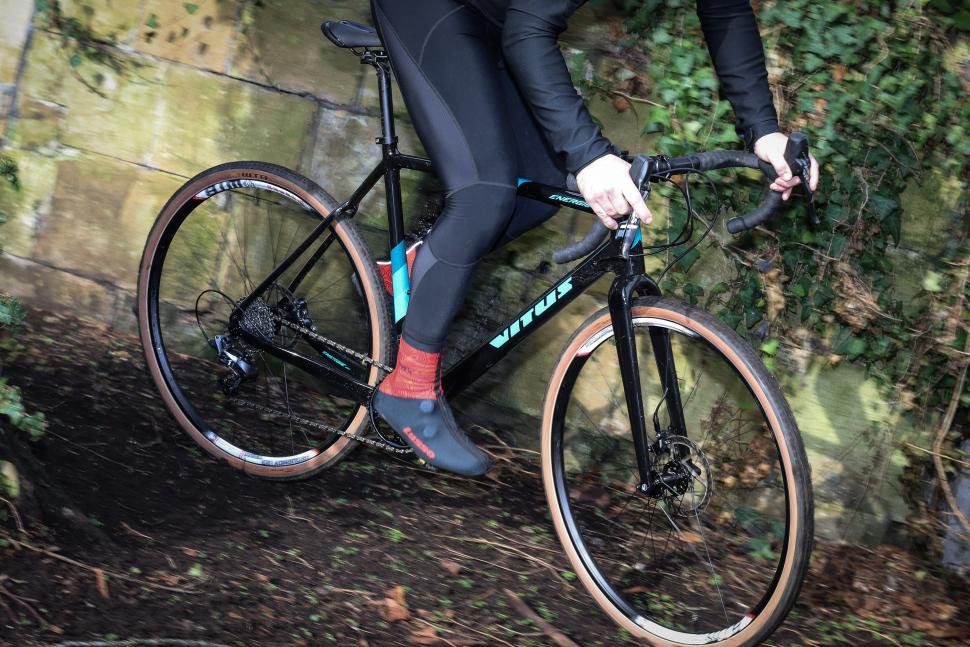
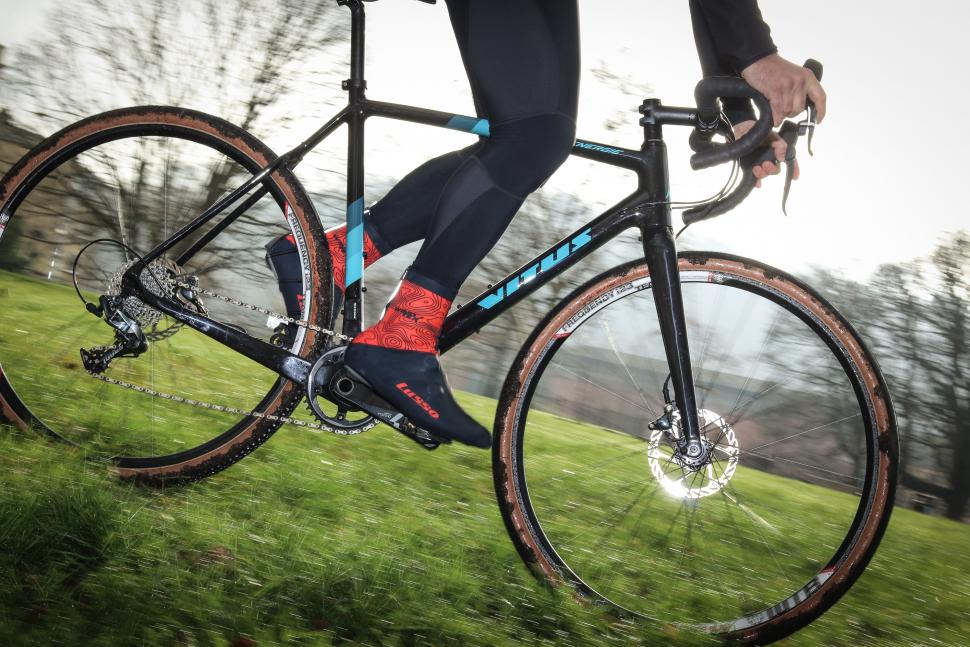
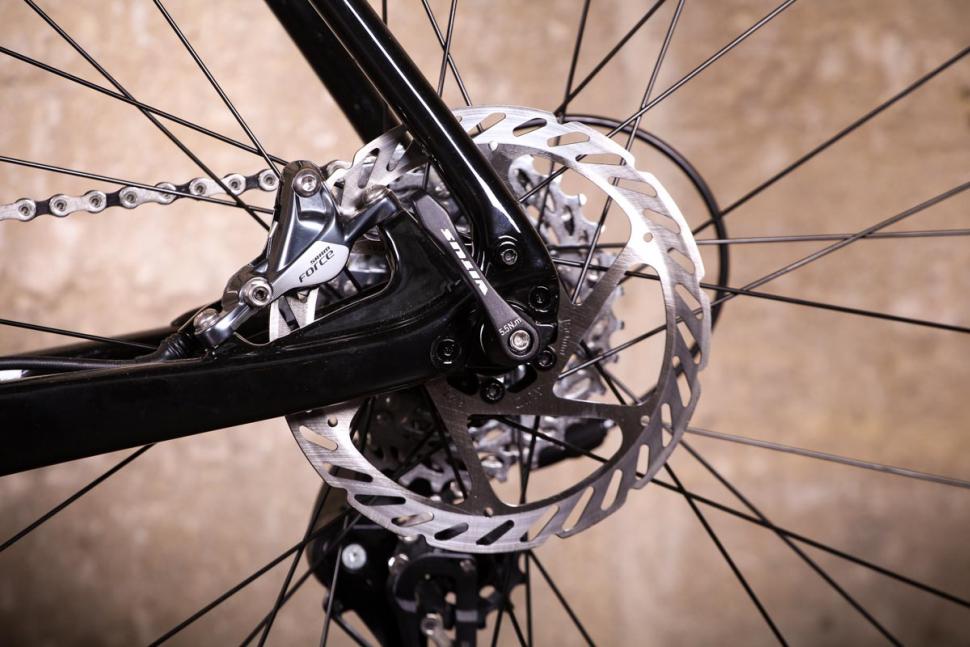
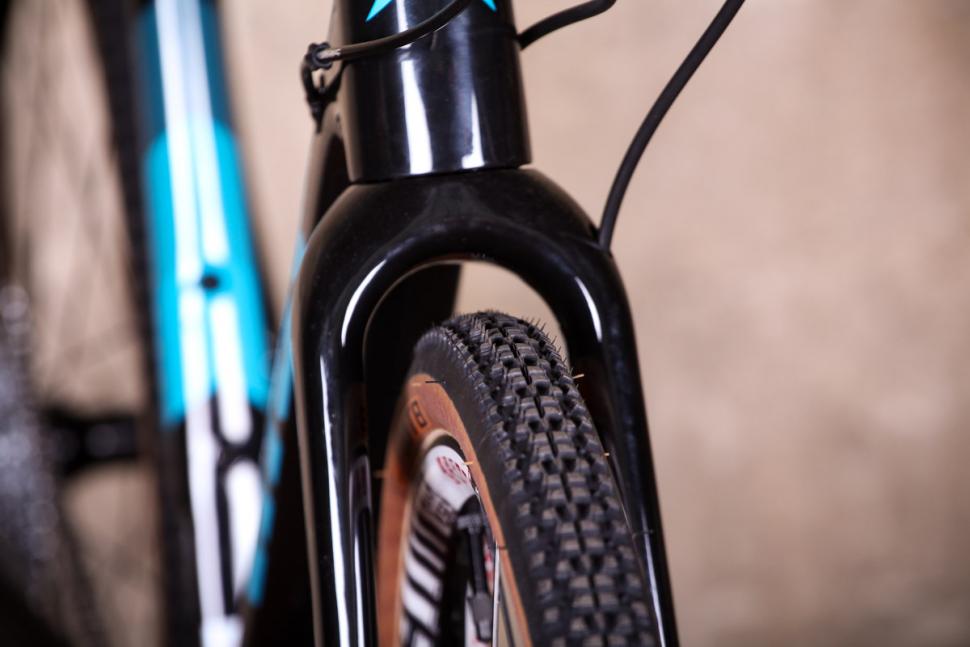
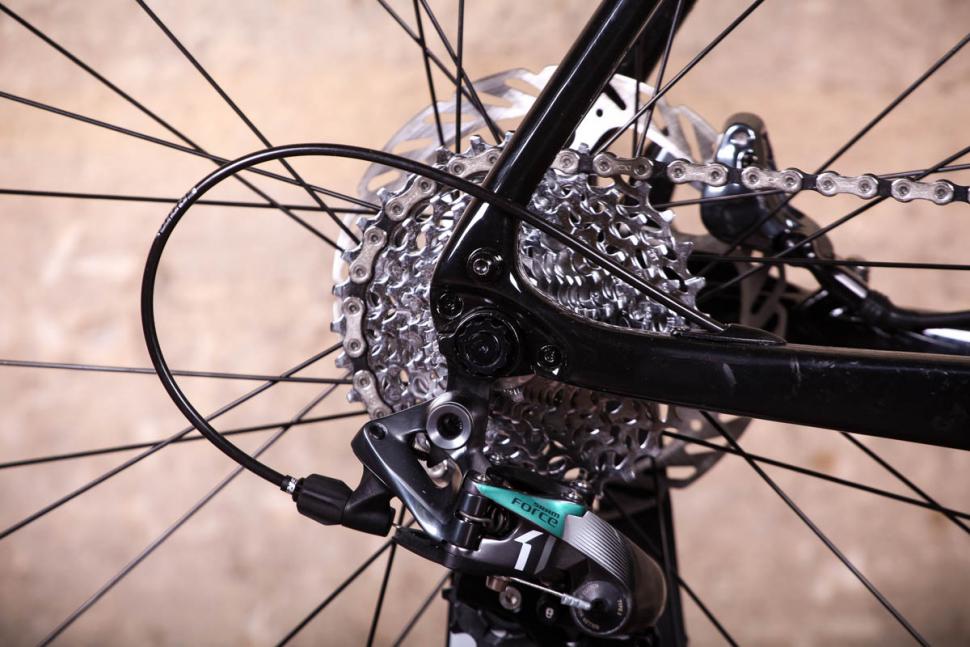
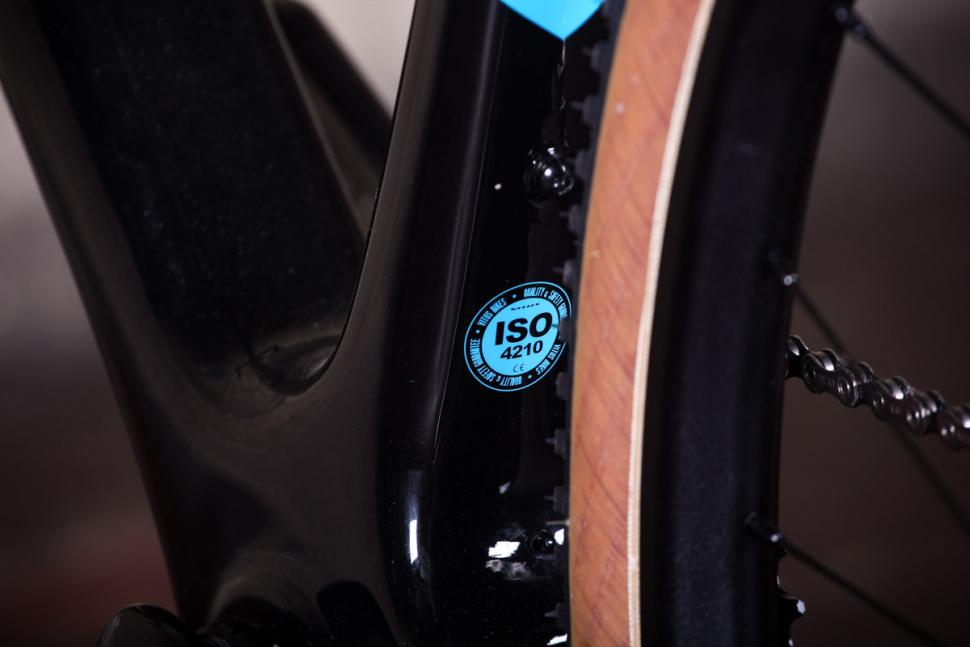
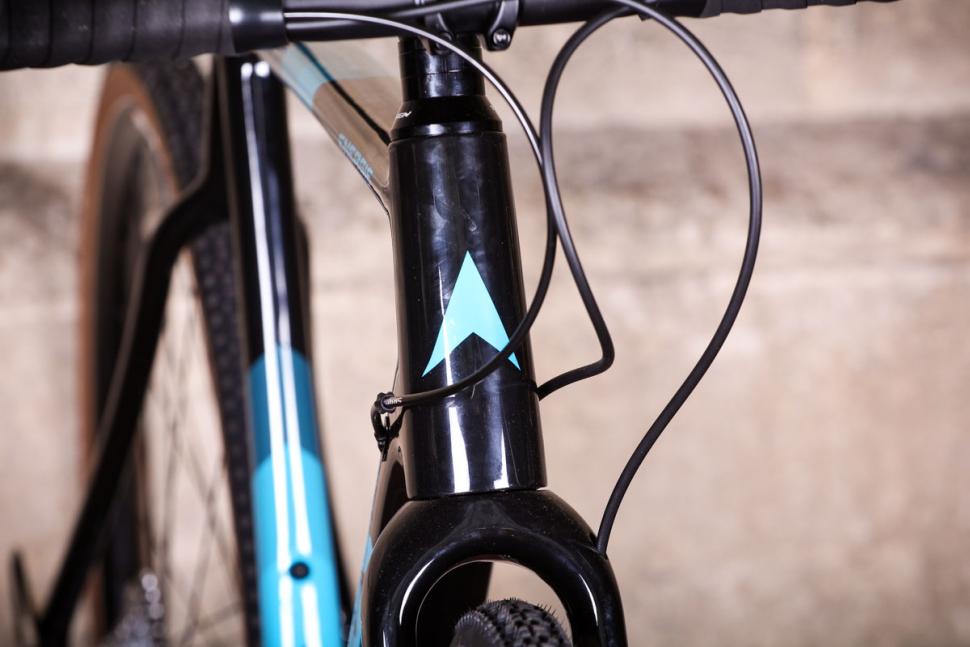
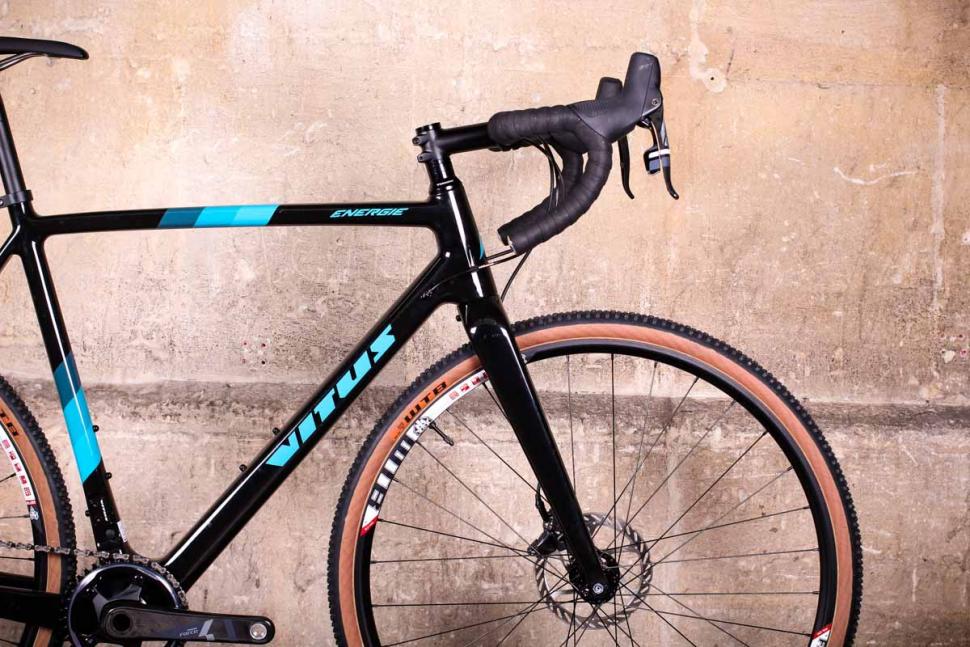
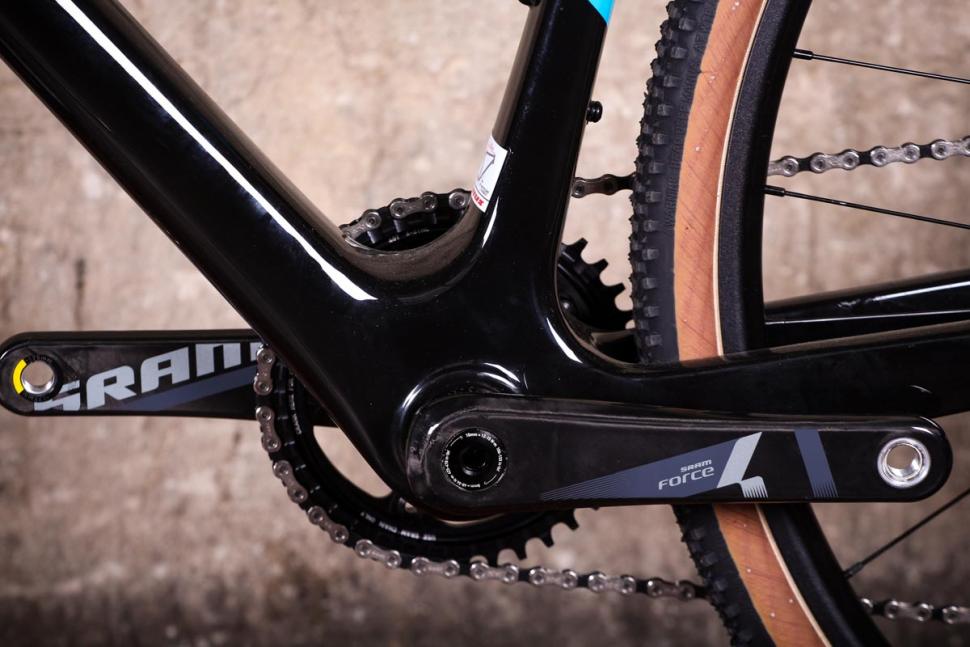
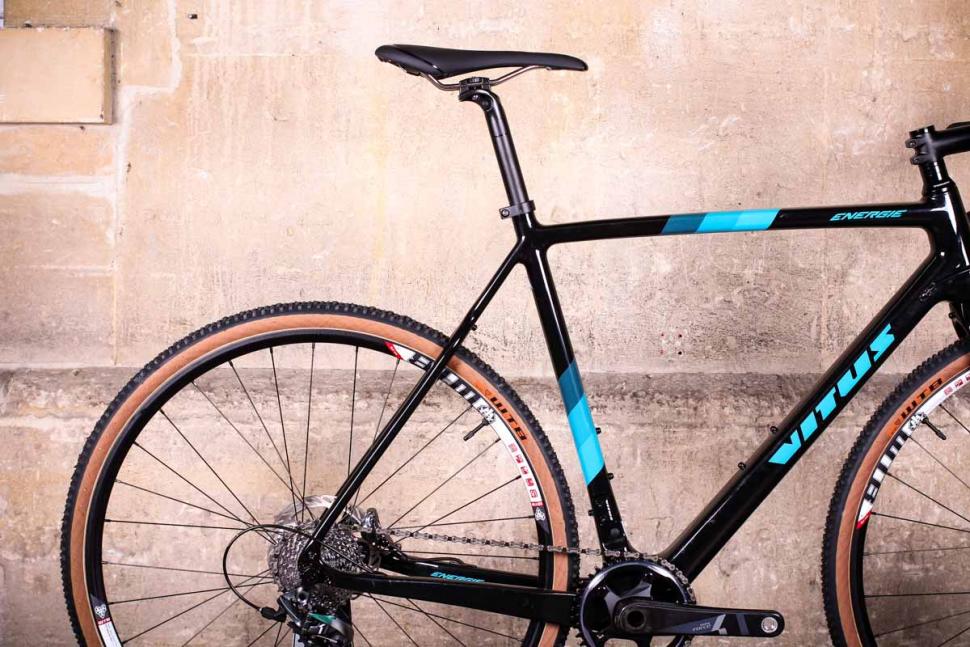
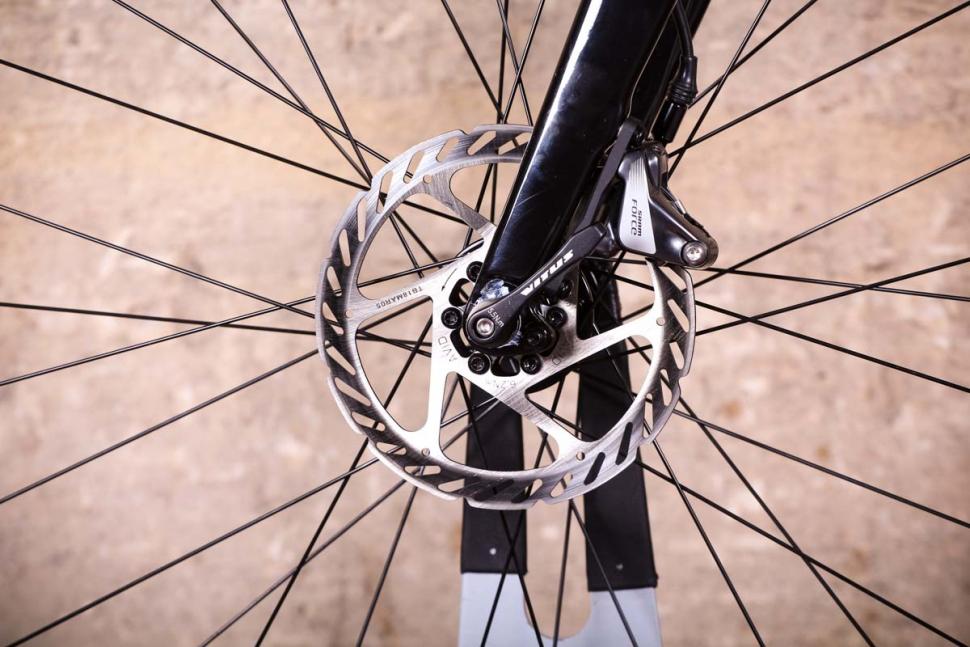
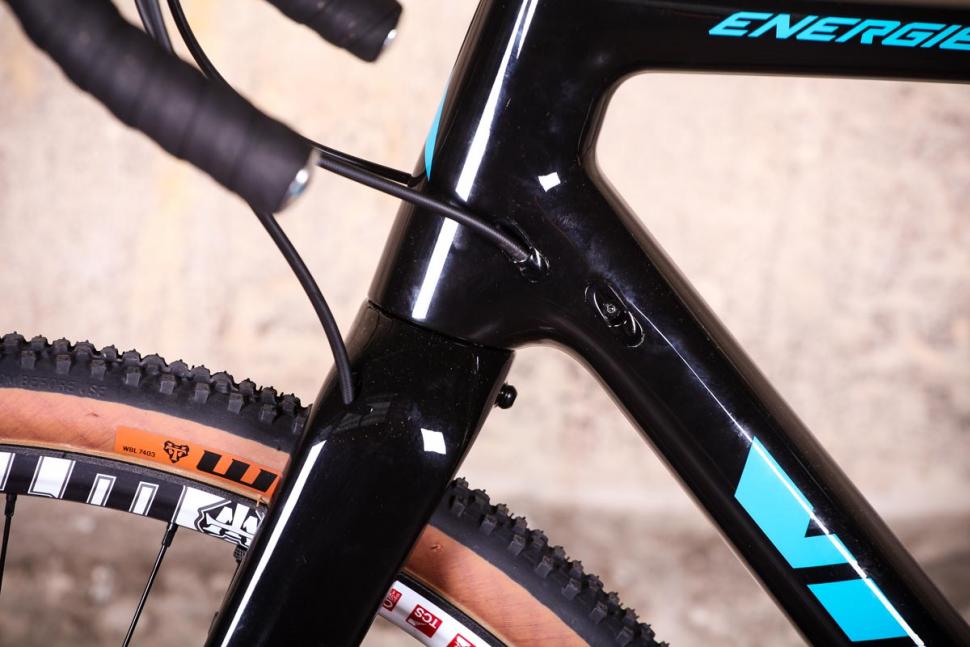

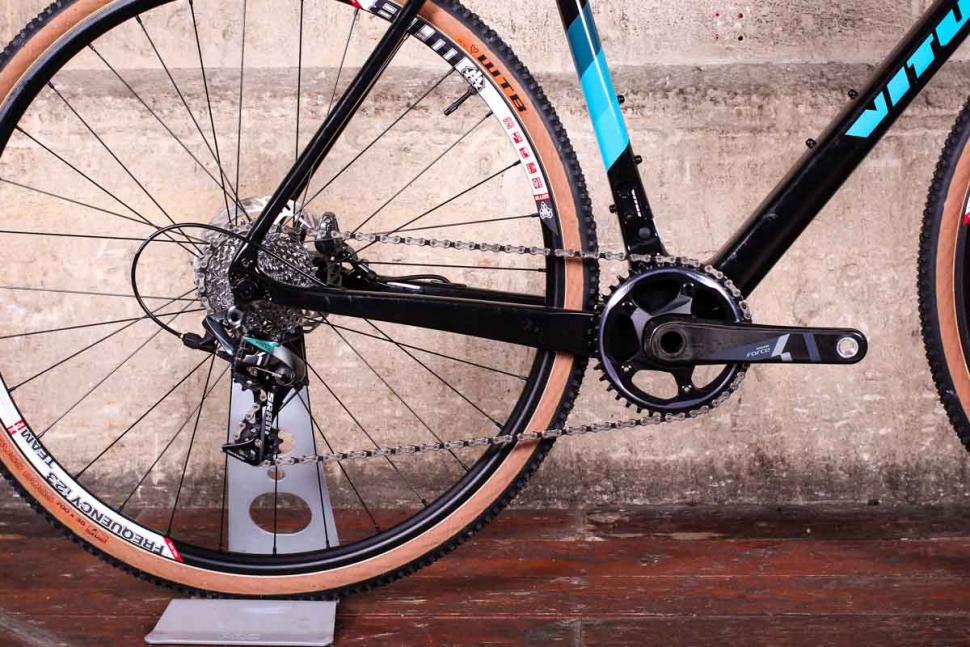

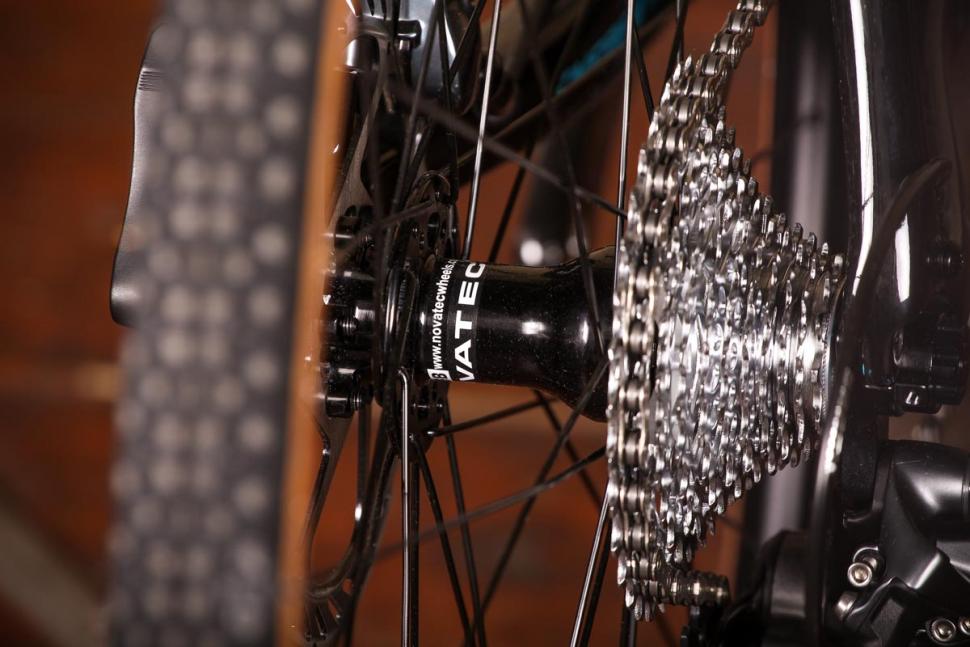
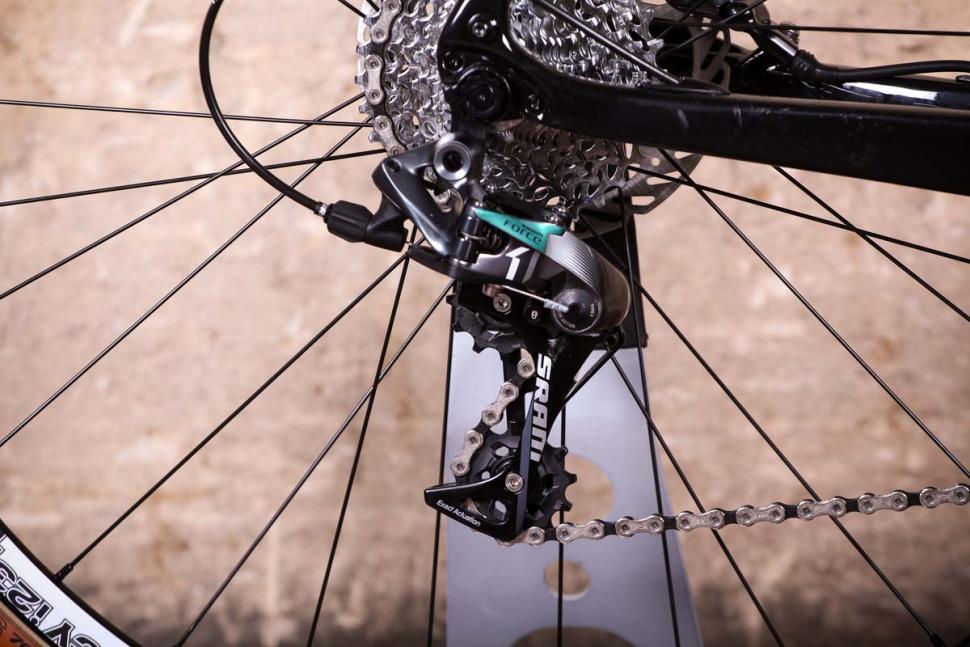
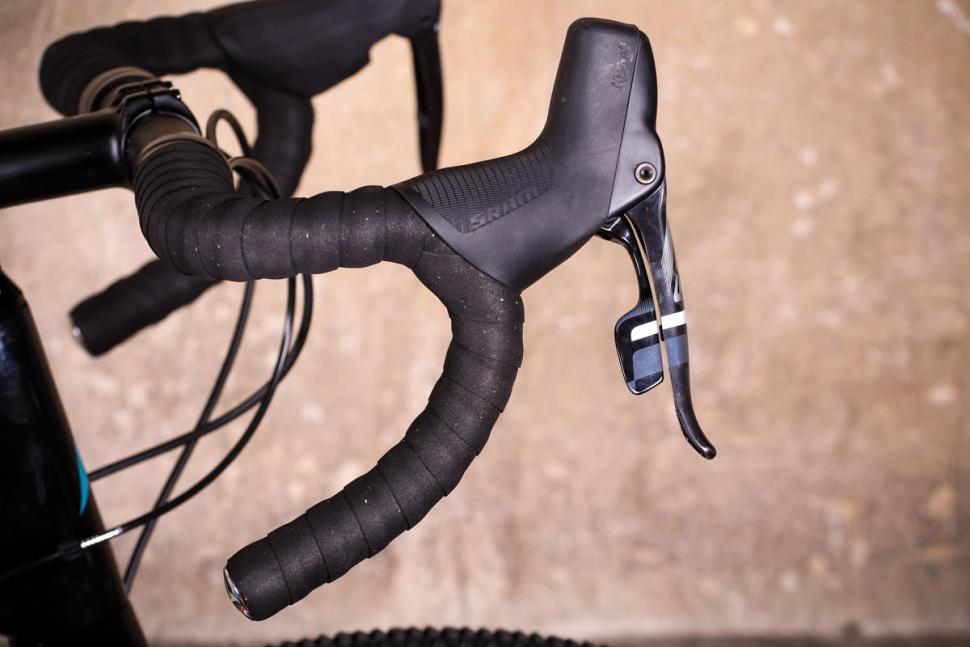
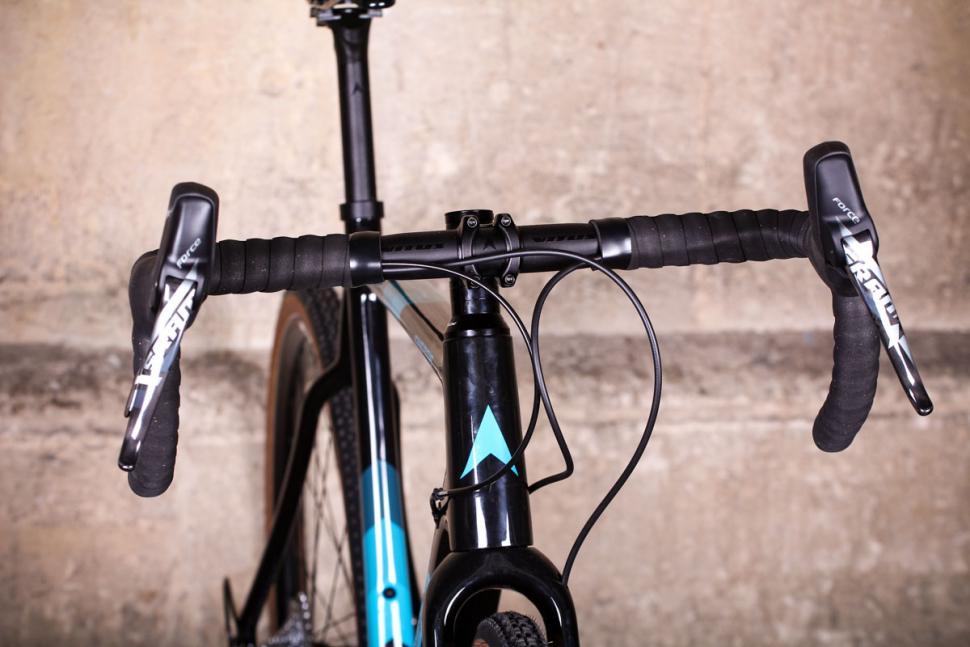
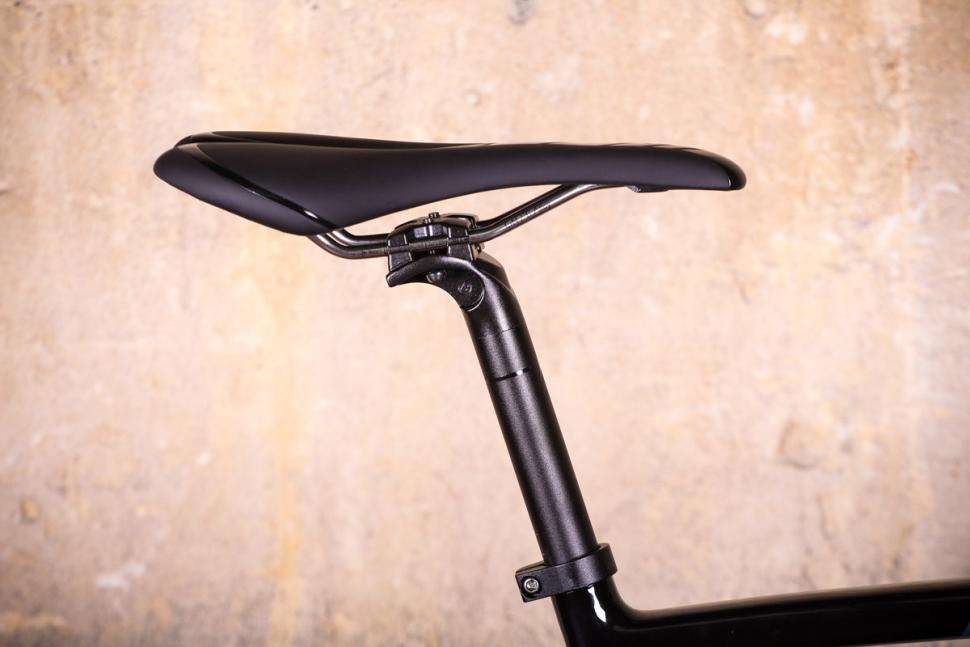

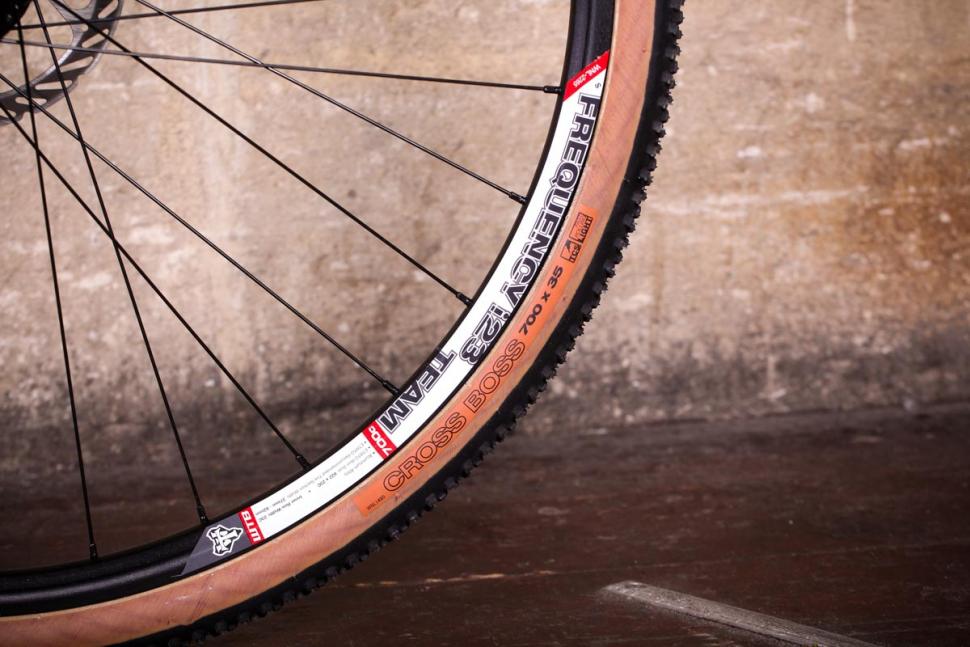


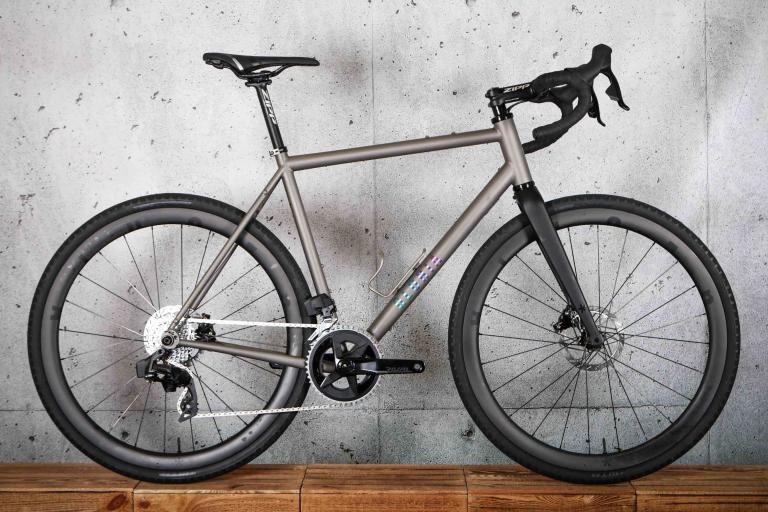
Add new comment
3 comments
Great value, but I’d want a wider cassette (32 is nothing these days) and mud clearance on the back looks tight..
|Any idea what max tyre size will this take front and rear?
If you're interested in this and big tyres, the alu version (the VR) will take at least WTB 42c resolutes. I'm trying 45c next on mine which should be ok. Definitely ok on the front.